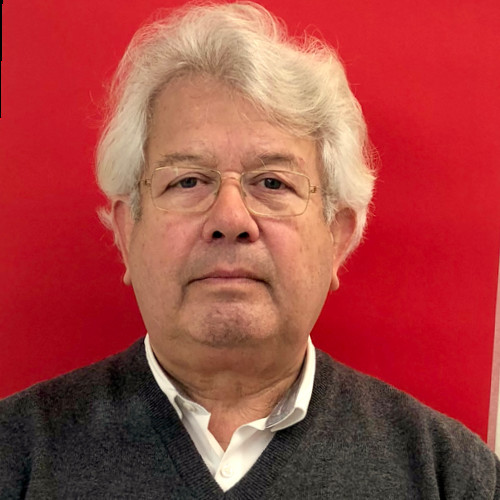The Role Activity of Complement, TNFα & IL12 in Pathogenesis Dengue Virus
Dengue Virus infection is always found in some part of the world especially South East Asia including Indonesia. The pathogenesis of Dengue Virus infection is still controversial. The aim of this study is to analyze the role complement activity, TNFα & IL12 in Dengue Virus infection especially in pathogenesis of Dengue Virus infection. Cross sectional study had been done since February 2009 in Dr. Soetomo Hospital Surabaya. Blood Sera of Dengue Virus infection were collected from Dengue Fever, and Dengue Hemorrhagic Fever patient who had been care in Paediatric. Dengue patients and time schedule for taking blood sample for examination CH50, TNFα & IL12 as follow: on the first day on admission, the second day, the third day. Study groups of patients as follow: Dengue Fever, 36; Dengue Hemorrhagic Fever grade I, 37; Dengue Hemorrhagic Fever grade II, 10; Dengue Hemorrhagic Fever grade III, 18; Dengue Hemorrhagic Fever grade IV, 6. In this study found that the higher activity complement which lower level CH50 was more identified on Dengue Shock Syndrome and Dengue Hemorrhagic Fever grade III than Dengue Fever cases. A concept of our study was focusing on manifestation of vascular leakage, measurement of complement activity CH50, TNFα & IL12 and clinical manifestation Dengue Hemorrhagic Fever. The examination of TNFα & IL12 in our study supported the role the activity complement. The conclusion are measurement CH50, TNFα & IL12 can be used as a predictive factor of the degree of Dengue Virus infection
Halstead SB, 1992. Pathogenesis of dengue: challenge to molecular biology. Science 45: 292–8.
Halstead SB, 2007. Dengue Seminar; www. thelancet.com. 370; 1644–52.
Kautner I, Robinson MJ, Kuble U, 1997. Dengue virus infection: Epidemiology, pathogenesis, clinical presentation, diagnosis and prevention. J Pediatr 131: 516–24.
Koraka P, Suharti C, Setiati TE, Mairuhu AT, Van Gorp E, Hack
CE, 2001. Kinetics of dengue virus-specific immunoglobulin
classes correlate with clinical outcome of infection. J Clin Microbiol 39:4332–8.
Kurane I, Enis FA, 2002. Immuno pathogenesis of dengue virus infection. In: D.J. Gubler DJ, Kun G (Penyunting). Dengue and dengue hemorrhagic fever. Wallingfird, UK: Cab. International, hal. 273–90.
Laoprasopwattana K, Libraty D, 2005. Dengue Virus (DV) enhancing antibody activity in preillness plasma does not predict subsequent disease severity or viremia in secondary DV infection. J.
Marovich M, Grouard VG, Louder M, 2001. Human dendritic cells as targets of dengue virus infection. J Invest Dermatol Symp Proc 6:219–24.
Melhop E, Ansarah-Sobrino C, Johnson S, Engle M, Fremont
DH, Pierson TC, 2007 Complemen protein C1q inhibits antibodydependent enhancement of flavivirus infection in an IgG subclassspecific manner. Cell Host Microbe 2, 417–26.
Nimmannitya S, 1996. Dengue and dengue haemorrhagic fever. Dalam: Cook GC, Penyunting. Manson's Tropical Disease. Edisi
Philadelphia: WB Saunders Company, hal 721–9. 10 Nisalak S, Chunsuttitwat S, Vaughan D, Green F, 2004. Relationship of preexisting Dengue Virus (DV) neutralizing antibody level to viremia and severity of disease in a prospective cohort study of DV infection in Thailand. J. Infect.Dis. 189: 990–1000.
Noisakran S and Perng GC, 2008. Alternate Hypothesis on the Pathogenesis of Dengue Hemorrhagic Fever (DHF) Dengue
Shock Syndrome (DSS) in Dengue Virus Infection. Exp Biol Med.
: 401–408.
Okunurak K, Sornmani S, Mas-ngammueng R, 1997. Treatment seeking behavior of DHF patiens in Thailand. Southeast Asian J Trop Med Pub Hlth 28: 351–8.
Ruangjirachuporn W, Boonpucknavig S, Nimmanitya S, 1979.
Circulating immunie complexes in serum from patients with dengue haemorrhagic fever. Clin. Exp Immunol 36: 46–53
Soegijanto S, Kushartono H, Hidayah N, Darmowandowo D, 2002. Demam berdarah dengue. Dalam: Soegijanto S, ed. Ilmu Penyakit Anak – Diagnosa dan Penatalaksanaan. Jakarta: Salemba Medika, hal. 45–66.
Soedarmo SP, 2002. Infeksi virus dengue. Dalam: Soedarmo SSP, Garna H, Hadinegoro SRS, Penyunting. Buku Ajar Ilmu Kesehatan Anak – Infeksi dan Penyakit Tropis. Edisi pertama. Jakarta: Balai Penerbit Fakultas Kedokteran Universitas Indonesia, hal 176–208.
WHO, 1997. Dengue haemorrhagic fever: diagnosis, treatment and control. Geneva, hal 17–27.
Yamanaka A, Kosugi S, Konishi E, 2008. Infection-enhancing and neutralizing activities of mouse monoclonal antibodies against dengue type 2 and 4 viruses are controlled by complement levels. Journal of virology 82, 927–937.
The Indonesian Journal of Tropical and Infectious Disease (IJTID) is a scientific peer-reviewed journal freely available to be accessed, downloaded, and used for research. All articles published in the IJTID are licensed under the Creative Commons Attribution-NonCommercial-ShareAlike 4.0 International License, which is under the following terms:
Attribution ” You must give appropriate credit, link to the license, and indicate if changes were made. You may do so reasonably, but not in any way that suggests the licensor endorses you or your use.
NonCommercial ” You may not use the material for commercial purposes.
ShareAlike ” If you remix, transform, or build upon the material, you must distribute your contributions under the same license as the original.
No additional restrictions ” You may not apply legal terms or technological measures that legally restrict others from doing anything the license permits.























